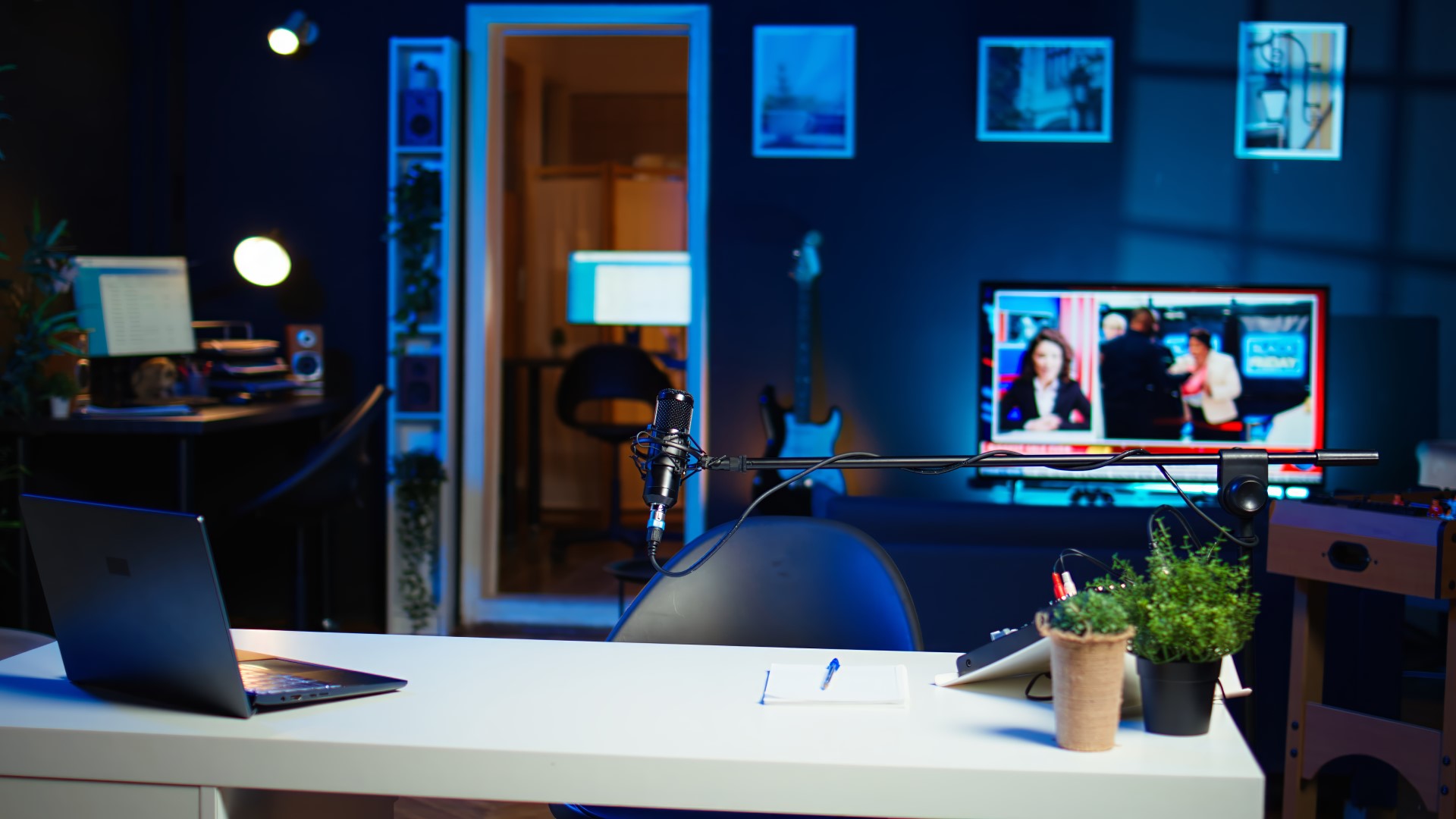Home Office in the Basement: How to Design a Productive Work-from-Home Space
Create Your Dream Home Office in Your Basement
As remote work becomes a permanent fixture for many, the need for a dedicated home office has never been greater. If your home lacks the space for a traditional office setup, your basement might be the perfect solution.
A basement home office offers privacy, separation from the main living areas, and the opportunity to design a workspace tailored to your needs. However, transforming a basement remodeling into a productive work-from-home space comes with unique challenges.
From maximizing natural light to selecting soundproofing materials and organizing storage, thoughtful design is key to creating an office that promotes focus, comfort, and efficiency. In this guide, we’ll cover the essential steps for designing a functional and inspiring basement home office.
Address Lighting Challenges: Maximize Natural Light and Use Layers
Basements often have limited or no natural light, which can make them feel dim and uninspiring. A well-lit workspace is critical for maintaining focus and energy throughout the day. Start by addressing natural light, then add layers of artificial lighting to create an inviting and well-lit environment.
Maximize Natural Light
If your basement remodeling has windows, use them to your advantage.
- Unobstructed Windows: Keep windows free of heavy drapes or furniture to allow maximum daylight to filter in.
- Light Wells: Install window wells with reflective surfaces to channel more natural light into the space.
- Glass Doors: If your basement opens to an outdoor area, consider installing glass doors to increase the flow of light.
For basements without windows, consider installing egress windows if possible. Not only do they provide natural light, but they also serve as a safety feature, meeting building codes for emergency exits.
Layered Artificial Lighting
Layered lighting ensures your basement remodeling office is well-lit for any task. Incorporate these types of lighting:
- Ambient Lighting: Overhead fixtures like recessed lighting or track lighting provide general illumination.
- Task Lighting: Desk lamps or adjustable arm lamps focus light on specific work areas, reducing eye strain.
- Accent Lighting: Use accent lighting, such as wall sconces or LED strips, to add depth and create a comfortable atmosphere.
Select bulbs with a color temperature of 3,500K to 4,500K for a bright, neutral light that mimics daylight and keeps you alert.
Soundproofing for a Quiet Workspace
A productive home office requires peace and quiet, but basements often have poor acoustics and unwanted noise from HVAC systems, appliances, or upstairs activity. Soundproofing your basement remodeling office helps minimize distractions and creates a more professional environment.
Install Acoustic Panels
Acoustic panels absorb sound and reduce echo, making your office quieter and more comfortable. These panels come in various colors and styles, allowing you to enhance both sound quality and aesthetics. Place them on walls or ceilings near noise sources for the best results.
Add Insulation and Drywall
For a more permanent solution, install soundproof insulation within your basement walls and cover it with drywall. Specialized soundproof drywall is available for even greater noise reduction.
Use Carpets and Rugs
Hard flooring surfaces can amplify noise, so consider adding area rugs or carpeting to dampen sound. Choose dense materials with a thick underlay for maximum noise absorption.
Seal Gaps and Cracks
Noise can seep through even the smallest gaps. Seal cracks around windows, doors, and vents with caulk or weatherstripping to block sound.
Ergonomic Furniture for Comfort and Productivity
An ergonomically designed office supports your physical health and keeps you comfortable during long workdays. The right furniture not only prevents strain and discomfort but also improves focus and efficiency.
Desk and Chair Setup
- Ergonomic Chair: Invest in a high-quality office chair with adjustable height, lumbar support, and armrests. Your chair should encourage proper posture and reduce strain on your back and neck.
- Standing Desk: Consider a standing desk or a desk with adjustable height settings. Switching between sitting and standing throughout the day can improve circulation and reduce fatigue.
- Desk Placement: Position your desk near a window if possible, so you can benefit from natural light and a view. If no windows are available, face the desk toward an inspiring piece of artwork or a focal wall to create a pleasant visual environment.
Monitor and Keyboard Position
- Monitor Height: Your computer screen should be at eye level, about 20–30 inches away from your face. Use a monitor stand or adjustable arm to achieve the correct height.
- Keyboard and Mouse Placement: Place your keyboard and mouse so your arms remain at a 90-degree angle while typing. Consider using an ergonomic keyboard and mouse to minimize strain.
Additional Comfort Features
- Footrests: A footrest can help maintain proper leg alignment and reduce pressure on your lower back.
- Anti-Fatigue Mats: If you opt for a standing desk, use an anti-fatigue mat to provide cushioning and support for your feet.
Smart Storage Solutions for Organization
A clutter-free workspace is essential for productivity. Incorporating smart storage solutions into your basement remodeling office design keeps supplies, paperwork, and equipment organized and easily accessible.
Built-In Storage
Custom built-ins maximize vertical and horizontal space, especially in basements with low ceilings or irregular layouts. Consider installing:
- Shelving Units: Use open shelves for frequently used items and decorative pieces, while closed cabinets store less attractive essentials like cables and paperwork.
- Floating Shelves: Save floor space by mounting floating shelves above your desk or along walls.
Mobile Storage
Rolling carts or cabinets with wheels provide flexible storage that you can move around as needed. They’re ideal for holding office supplies, printers, or crafting materials.
Hidden Storage
For a sleek and clutter-free appearance, integrate hidden storage into your furniture. For example:
- Desks with built-in drawers or compartments.
- Ottomans or benches with hidden storage inside.
- Under-desk drawers or keyboard trays.
Maximizing Space in Small or Irregular Basements
Basements often have limited square footage, but strategic planning can help you make the most of the available space.
Multi-Functional Zones
If your basement remodeling serves multiple purposes, such as a home office and guest room, create distinct zones using furniture placement or room dividers. Foldable screens, bookshelves, or curtains can visually separate areas without taking up valuable space.
Compact Furniture
Choose furniture designed for small spaces, such as:
- Wall-mounted desks that fold away when not in use.
- Narrow desks or corner units that fit into tight spaces.
- Stackable or collapsible chairs for occasional use.
Vertical Storage
Make use of vertical space by installing tall shelving units or wall-mounted pegboards. This keeps items off the floor and opens up more usable workspace.
Adding Personality and Inspiration
While functionality is important, your basement office should also be a space where you feel motivated and inspired. Add personal touches and design elements that make the room inviting and reflective of your style.
Color Scheme
Choose a color palette that promotes focus and creativity. Neutral tones like gray, beige, or soft white provide a calming backdrop, while pops of blue or green can enhance concentration and productivity.
Wall Decor
Decorate the walls with artwork, framed photos, or motivational quotes that resonate with you. A gallery wall or a single statement piece can add character to the room.
Indoor Plants
Plants bring life and freshness to any space. Choose low-maintenance options like snake plants, pothos, or peace lilies, which thrive in low-light conditions often found in basements.
Tech and Connectivity Considerations
A basement remodeling office needs reliable technology and connectivity to support remote work. Address potential tech challenges during your remodel to ensure a smooth work experience.
Reliable Wi-Fi
Basements can sometimes have weak Wi-Fi signals. Boost your connectivity with:
- A mesh Wi-Fi system to extend the network range.
- Ethernet connections for more stable and faster internet speeds.
Electrical Outlets
Install additional outlets during your remodel to accommodate all your devices. Consider USB-compatible outlets for charging phones, tablets, and other gadgets.
Cable Management
Use cable organizers, clips, or raceways to keep cords tidy and out of sight. This reduces clutter and minimizes tripping hazards.
Enhancing Air Quality and Climate Control
Basements often face issues like poor ventilation, fluctuating temperatures, and higher humidity levels, all of which can affect your comfort and productivity. Addressing these concerns is essential to create a healthy and comfortable workspace.
Ventilation
Proper ventilation is key to maintaining good air quality in your basement office. If your basement remodeling has windows, open them periodically to allow fresh air to circulate. For basements without windows, consider installing a mechanical ventilation system or air exchanger to improve airflow and remove stale air.
Climate Control
Basements are naturally cooler and can feel damp, especially during colder months. Installing a dedicated HVAC unit or a ductless mini-split system allows you to control the temperature of your office independently from the rest of the house. A space heater or portable fan can also be useful for addressing specific needs.
Dehumidifiers
Humidity levels in basements can lead to discomfort, musty odors, or even mold growth. A dehumidifier helps regulate humidity, keeping the air dry and comfortable. Aim for a humidity level between 30% and 50% for optimal comfort and health.
By enhancing air quality and climate control, you’ll create a basement office that’s comfortable, productive, and pleasant to work in all year round.
Your Perfect Basement Home Office Awaits
Designing a productive work-from-home space in your basement remodeling is a smart way to maximize your home’s potential while creating a quiet and comfortable environment for work. By focusing on lighting, soundproofing, ergonomic furniture, storage, and personal touches, you can transform your basement into a functional and inspiring home office.
Whether you’re working full-time from home or need a dedicated space for occasional tasks, a thoughtfully designed basement office can boost your productivity and enhance your work-life balance. At John Tidwell and Sons, we specialize in creating custom basement remodels tailored to your needs. Contact us today to start planning your dream home office and make your basement work for you.


